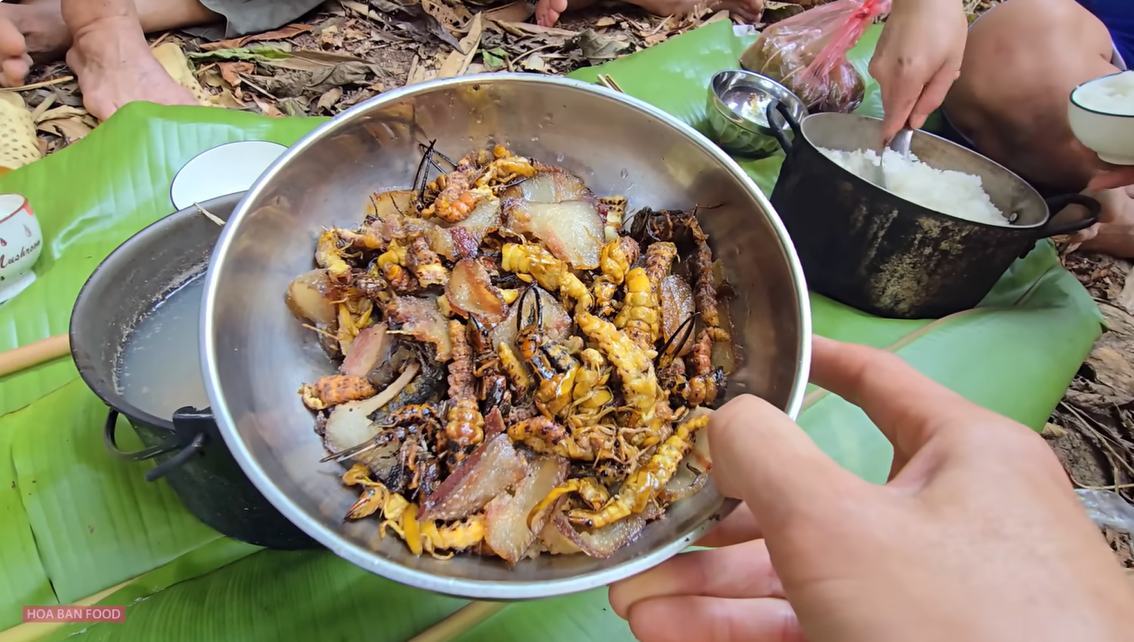At first glance, stone worms - a rare specialty of the Thai ethnic group in Northwest Vietnam - look more like something out of a horror movie than a delicacy.
Their long, segmented bodies, numerous tiny legs, and sharp pincers make them resemble centipedes or larvae. However, once cooked, these bizarre creatures transform into a crispy, buttery dish that surprises even the most hesitant diners.
Known locally as “sâu đá” (stone worms) or “sâu nước” (water centipedes), these creatures thrive under rocks in fast-flowing mountain streams in provinces such as Yen Bai, Lao Cai, and Lai Chau. The best places to find them are areas with clustered stones and strong currents.
Hunting for stone worms: A delicate process
Unlike regular aquatic creatures, stone worms do not swim. Instead, they cling tightly to rocks beneath the water’s surface, making them difficult to spot. The best time to catch them is during the dry season from January to April (lunar calendar), especially after the first summer rains.
Local hunters carefully flip over rocks and use fine nets to scoop up the worms, but they must be cautious.
"Stone worms have dozens of legs and sharp pincers, much like a centipede. The larger ones can even bite and draw blood," said Luong Nam, a resident of Mu Cang Chai, Yen Bai province.
Once caught, the worms are soaked in salt water for 15–20 minutes to remove slime and impurities. Locals typically discard the head and intestines, keeping only the fatty body for cooking.
A surprising delicacy: Crispy, buttery, and full of flavor
Despite their unsettling appearance, stone worms are considered a rare and treasured dish, typically reserved for special occasions or to impress distinguished guests.
In Phong Tho, Lai Chau, the Thai ethnic group prepares them by stuffing their bellies with minced goby fish before frying. Other communities prefer to deep-fry them with lime leaves and pickled bamboo shoots, enhancing the natural flavor.
Some describe stone worms as having a taste similar to silkworm pupae or bamboo worms, with a crunchy exterior and a rich, buttery interior.
"There are two types of stone worms," Nam explained. "The young ones are black and resemble centipedes, while the mature ones turn yellowish and develop sharp horns. Both types are edible, but their flavors differ slightly."
Because of their rarity, stone worms are not widely available and are mostly consumed within ethnic communities.
"Nowadays, stone worms are becoming harder to find, so they are mainly served on special occasions or as a treat for honored guests," Nam added.
A word of caution for first-time eaters
While stone worms are a unique delicacy, they can trigger allergic reactions in some people. If not properly cleaned or stored, they may cause food poisoning. Those with seafood allergies or sensitive stomachs should be cautious before trying them.
For adventurous food lovers, though, stone worms remain a thrilling and unforgettable culinary experience - one that starts with fear but ends with delight.




Photo credit: Hoa Ban Food